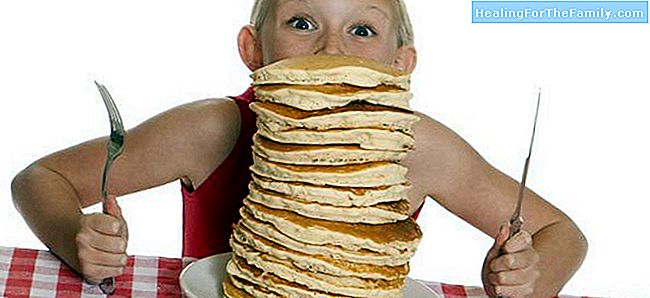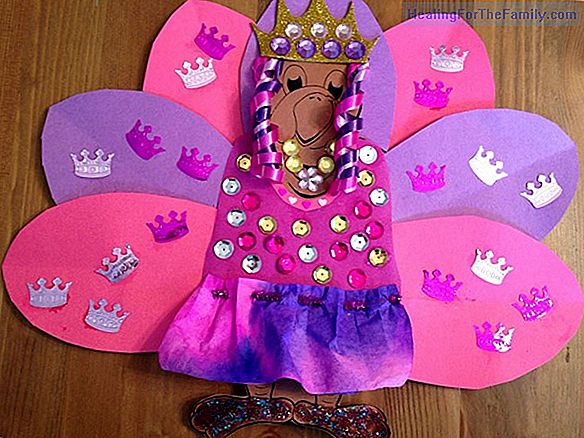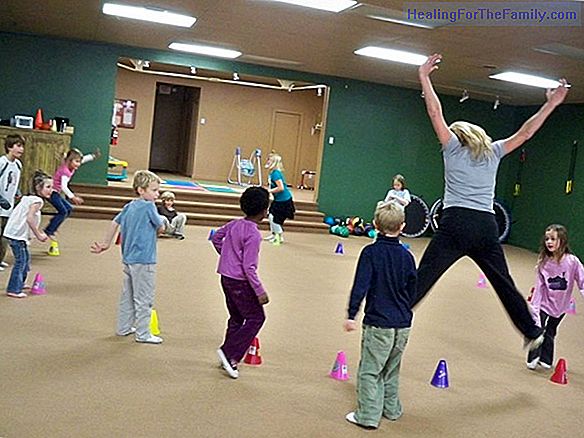Proportions of balanced diet for children
What nutrients should the ideal diet of children be composed of? The nutritionist Lucia Bultó explains what are the proportions of proteins, carbohydrates and fats children need to grow healthy and strong. Proportion and quantity are the key words of a balanced and balanced diet for children. The ap
What nutrients should the ideal diet of children be composed of? The nutritionist Lucia Bultó explains what are the proportions of proteins, carbohydrates and fats children need to grow healthy and strong.
Proportion and quantity are the key words of a balanced and balanced diet for children. The appetite of each child marks, in the majority of the occasions, the guideline of what each one must ingest according to their age, of the physical and sport activity that they carry out daily and of the period of the development in which they are, because in the peaks of growth you eat more.
Amounts of the ideal diet for children

Dietitian-nutritionist Lucia Bultó, author of the book The Nutrinanny Tips asegura, ensures that the development of each child, in regard to its characteristics ofweight, height and maturity , varies and this must be taken into account when it comes to feeding. In addition, men tend to have a larger size than girls and that must be taken into account when filling the dishes. As a general rule,girls should eat 10 percent less than boys. Amounts given by the world health authorities, which set the pattern that serves as a starting point to organize the ideal amounts of food for children. According to the recommendations of the
WHO (World Health Organization): - about half of the total calories that children ingest per day should come from
carbohydrates - between 12 and 15 percent should come in the form of
proteins - between 25-35 percent in the form of
fat .After each child must move that amount according to their needs, depending on the time of life that is going through, the age at which it is, children with more delayed growth ... It will always be the pediatrician or the nutritionist who adjust the amounts depending on the situation in which the child is and his / her state of health. Thus a person with moderate physical activity should consume a smaller amount of nutrients than a person with greater activity; Age is also an important factor, children and adolescents consume more nutrients than older people.
Half of the plate should be filled with hid carbohydrates, including bread, pasta, potatoes and rice. Between 12 and 15 percent of that same dish should contain protein foods meats, fish, eggs, ham, legumes, lentils, beans, chickpeas, and the rest, that is, fats should be counted on the fat that leads the meat or the pescaso, the oil with which we cook and the nuts, which are rich in fat.
The climate of the place of residence is also important since more fruits and vegetables tend to be consumed in warm areas than in cold places where caloric foods are preferred. However, with respect to proteins, it is recommended not to exceed 0.8 g. per kilo of weight and day and in relation to carbohydrates are recommended in 4.5 g. per kilo of weight and day. The pyramid of a good balanced diet for children
1.
Basic consumption
. At the base of the pyramid are the foods that we must consume daily like cereals, potatoes, vegetables, seeds, fruits, milk, proteins, milk derivatives and olive oil. 2.Alternate consumption
. On the central step are the foods that we should eat several times a week (not every day) such as legumes, nuts, fish, eggs and lean meats. 3.Occasional consumption
. At the top of the pyramid, the occasional foods are pastries, sugars, soft drinks, fats and red meats.












